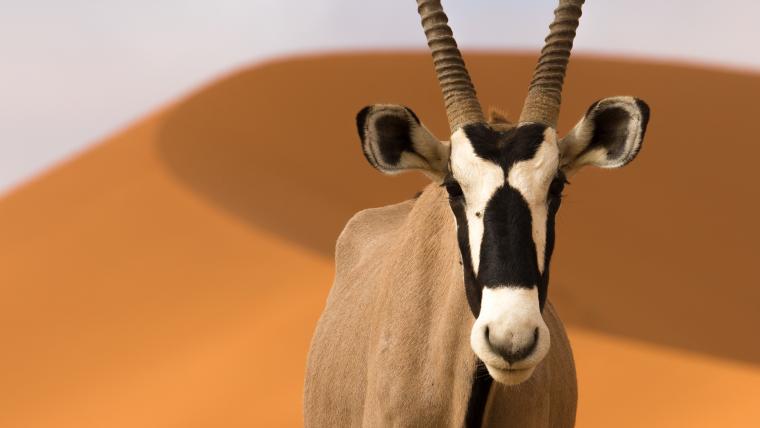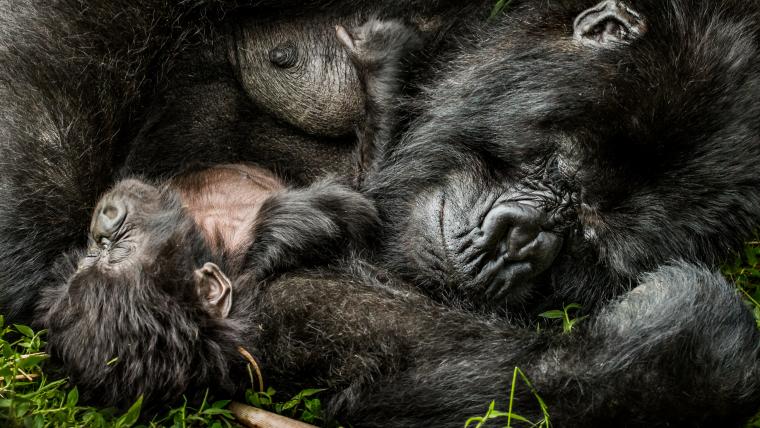
How the oryx cracked the code to thriving in the desert
The wind sends a veil of sand dancing through the air. It lands at the hooves of a giant. With measured steps, the oryx rises to the top of the shifting dune. The Namib Desert is silent, the sun is sweltering. Endless wilderness stretches out before the antelope. He needs nothing else – not even water. The oryx holds the secrets to survival in this treacherous landscape.
Four species of the oryx family can be found in parts of Africa and the Arabian Peninsula. The largest member is native to the arid regions of Namibia, Botswana, and South Africa, where it’s also known as gemsbok. They roam the terrain in herds of up to 40, their white bellies reflecting heat from the sand. Having adapted to living in these harsh conditions, oryxes eat the rough desert grass for nourishment. They have also mastered staying hydrated when water is scarce, cooling themselves through nasal panting and munching on tsamma melons for moisture.
The oryx’s innovative feeding habits aren’t their only means of survival. When challenged by a rival, its iconic horns come into play. The dark, striking protrusions on its head are sharp enough to pierce the skin of any predator that dares approach. If an oryx loses a horn, it will never grow again. It’s their most prominent physical feature, but it’s also a trophy for hunters.
Although the IUCN currently lists oryxes as animals of least concern, that doesn’t mean they’re fair game. These nomads of the desert aren’t playthings. The oryx has a right to freedom and deserves to be treated with the highest regard.






























Please sign in to leave a comment